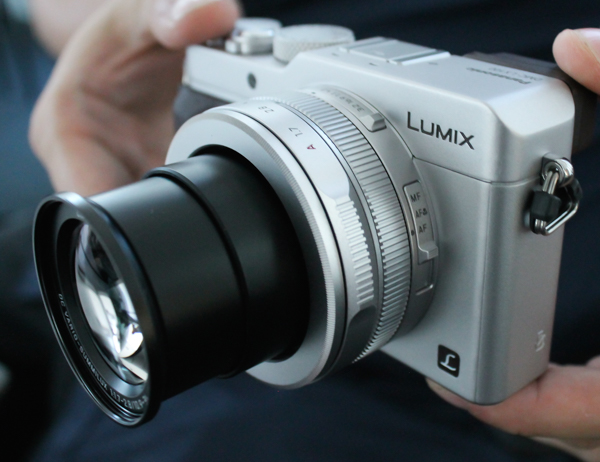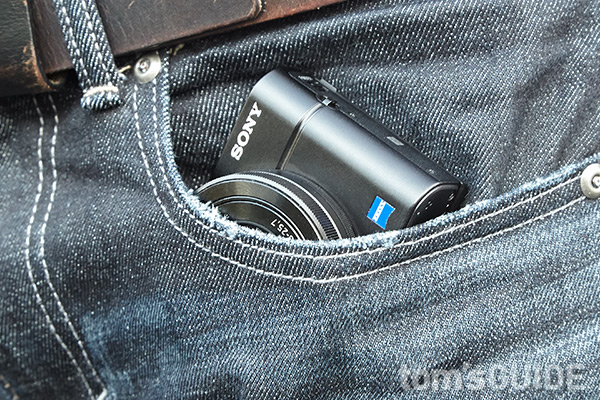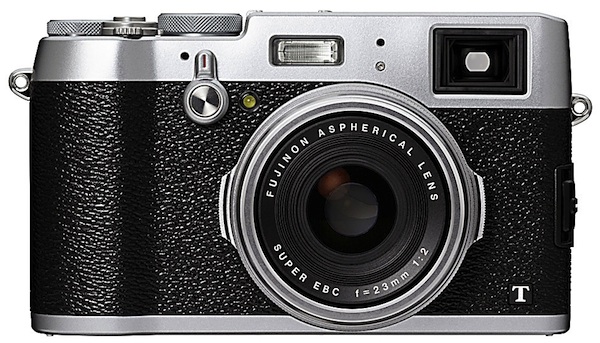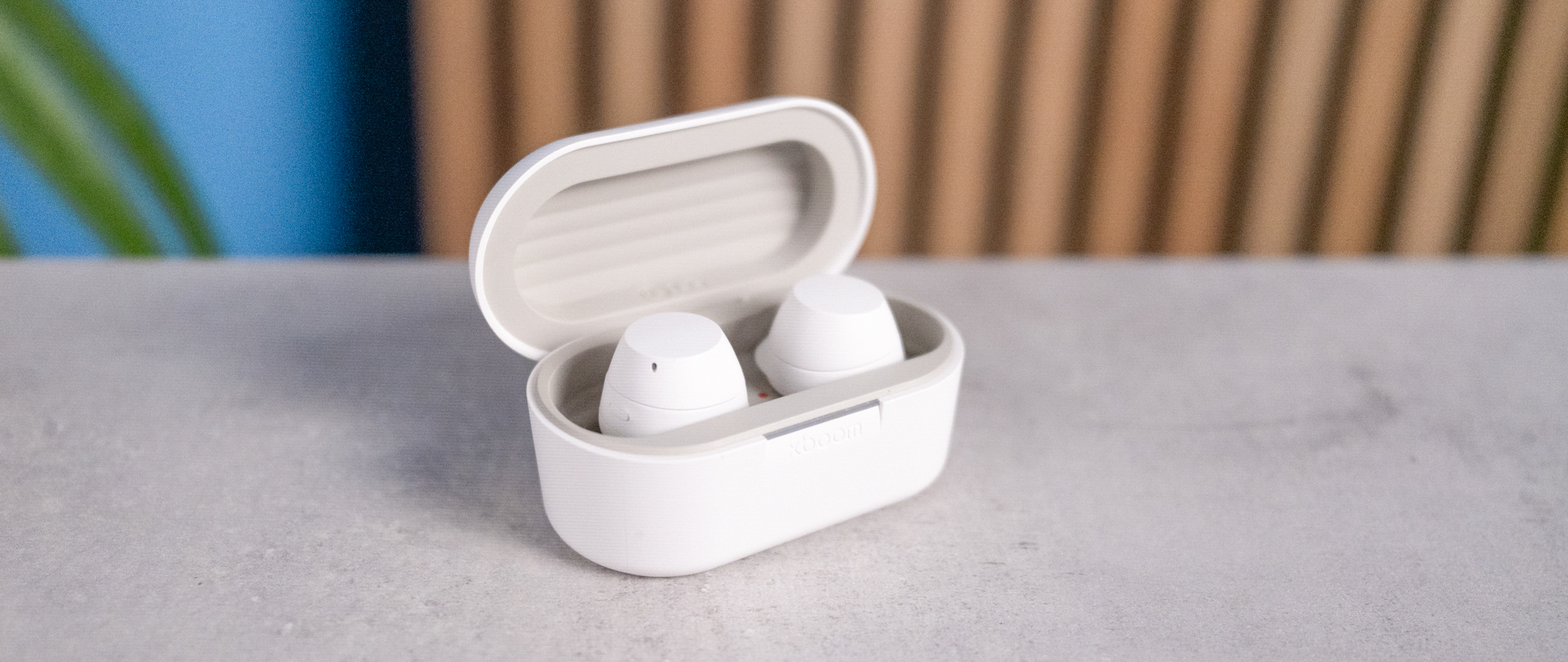New Fixed-lens Cameras Challenge DSLRs and Mirrorless
The latest fixed-lens cameras from Canon, Fujifilm, Panasonic and Sony pack top-end components, manual controls, and one primo lens. Do you need more?

Panasonic is selling a new high-end, mirrorless camera, the LX100, with a large, 12.8-megapixel sensor, its latest image processor, a metal body and even the ability to shoot ultra HD (aka 4K) video, all for $899. That price includes a 24-75mm (full-frame equivalent) Leica lens. Its large max apertures, from f-1.7 (wide) to f-2.8 (telephoto) beat the kit lenses that come with Panasonic's other mirrorless cameras. But the glass on the LX100 isn't a kit lens; it's the only lens, one permanently attached to the camera.
Long considered the dividing line between serious and casual cameras, the ability to remove a lens is growing less important at least to camera makers that are offering high-performance devices with fixed lenses. They may have a point. If you have one really good lens, do you need the ability to add another — especially if that entails more bulk and expense?
MORE: Best DSLRs 2014
The LX100 is the latest, and unlikely the last, of a new breed of camera that promises to do everything a DSLR or traditional mirrorless camera can do, except shed its lens. Canon's G1 X line is another example. Canon's G line began in the year 2000 as a series of beefy compact shooters with advanced controls meant to be casual cameras for photographers weary of carrying their DSLRs. But up through the G16, they packed tiny sensors typical of a point-and-shoot camera.
Bigger sensors make the difference
With the GX 1, launched in 2012, and this year's successor, the $800 GX 1 MII, Canon dropped a far-larger 1.5-inch sensor — about 5X the size of the old sensor — into a body not much larger than the previous G16. That sensor is a scosche bigger than the so-called Four-Thirds sensors in Panasonic's mirrorless cameras.

With the LX100, Panasonic has made a similar change to Canon's. The new camera succeeds Panasonic's LX7, which despite its sophisticated controls also packed the same dinky-size sensor of Canon's older G cameras. The LX100 has a comparatively massive Four-Thirds sensor.
Fujifilm takes the trend farther with its X100 cameras. The newly announced X100T sells for $1,300 and features the even-larger APS-C-size sensor found in most DSLRs and higher-end mirrorless cameras, but it limits users to a fixed lens with a single, slightly wide-angle 23mm lens.
Sign up to get the BEST of Tom's Guide direct to your inbox.
Get instant access to breaking news, the hottest reviews, great deals and helpful tips.
| Row 0 - Cell 0 |
Features
Canon GX 1 MIIFujifilm X100TPanasonic LX100Sony RX100 IIISensor (% full-frame)1.5-inch (27%)
APS-C (42%)
Four-thirds (26%)
1-inch (13%)
Megapixels12.8
16.3
12.8
20.1
Top video formats1080p: 30fps
1080p: 60/30/24fps
UHD 2160p: 30/24fps
1080p: 60/30/24fps
1080p: 60/30/24fps
Lens (full-frame)24-120mm
35mm
24-75mm
24-70mm
Max apertures
f/2 - 3.9
f/2
f/1.7 - 2.8
f/1.8-2.8
Burst shots (fps)5.2
6
11
10
Screen3-inch, tilt, touch
3-inch, touch
3-inch
3-inch, tilt
Viewfinder
No
Optical/LCD hybrid
LCD
OLED
Shutter (sec.)
1-1/4000
1-1/4000
60-1/4000
30-1/2000
Flash
Built-in & hotshoe
Built-in & hotshoe
External (included)
Built-in
Sensitivity (ISO)100-12,800
100 - 51,200
100 - 25,600
125-12,800
Ext mic option
No
Yes
No
No
Dimensions (in.)
4.6 x 2.9 x 2.6
5.0 x 2.9 x 2.1
4.5 x 2.6 x 2.2
4 × 2.4 × 1.6
Weight (oz.)
19.5
15.5
13.9
10.2
Price
$800
$1300
$899
$800
--------------------------------
Sony has taken this trend the farthest, though. Its RX1R camera has the kind of giant full-frame image sensor found in professional DSLRs, and a fixed lens with a single wide-angle focal length of 35mm. It costs $2,800.

A more affordable option from Sony is its RX100 line. The current RX100 III (read review) costs $800 and has a 2.9X zoom lens. It generally has lower specs than competitors, but it's also about half the size — small enough to fit into a pocket, with slight shove. The camera's 1-inch sensor is the smallest of the bunch — half the size of the latest Canon's. But this Sony took great photos in our tests, often beating the Canon GX 1 MII in our head-to-head comparison. Meanwhile, Canon has just introduced a closer competitor with its own pocektsize, 1-inch sensor model, the PowerShot G7 X.
The fixed lens bargain
In exchange for the limit to a single lens, buyers of these new cameras get a much better lens than they might be able to afford with a DSLR or mirrorless camera. They sometimes get an overall better camera, too. Take Panasonic's new LX100. In specs, it falls between Panasonic's $800 (with kit lens) GX7 and its $1,700 (without lens) GH4 mirrorless cameras. The LX100 is actually closer to the latter, sharing the same fast autofocus system and ability to shoot Ultra HD video. And it shoots still photos nearly as fast – 11 fps vs. 12 fps.
The LX100 does skimp on a few features, though, such as an external microphone jack to record audio worthy of the 4K video. And instead of an OLED electronic viewfinder, it has an LCD viewfinder with a bluish tint that the engineers told me they won't be able to completely eliminate. The resolution of the LX100 is lower, but that's not necessarily a downside. Camera companies sometimes pack fewer pixels onto a sensor in exchange for larger pixels that work better in low light.
MORE: Panasonic GH4 vs. Sony AX100: 4K Consumer Video Cameras
Then there's the lens. The large apertures on the LX100 allow for better low-light performance. The camera also allows for pleasing shallow depth of field effects and the blurring out of lights in the background into soft circles — an effect called bokeh that serious photographers salivate over.

The closest lens with similar specs for the GH4 or Panasonic's other mirrorless cameras is the Lumix G X Vario 12-35mm (equivalent to 24-70mm) lens, which costs $1,000. Put that on the GH4, and you have a camera that costs $2,700 and is far larger than the $800 LX100.
Compared to the removable-lens alternatives, fixed-lens camera's like Panasonic's LX100 look like a heck of a deal.
Senior editor Sean Captain believes a camera can never be too small, as long as it doesn't leave out any features. Follow him @seancaptain and on Google+. Follow us @tomsguide, on Facebook and on Google+.
Sean Captain is a freelance technology and science writer, editor and photographer. At Tom's Guide, he has reviewed cameras, including most of Sony's Alpha A6000-series mirrorless cameras, as well as other photography-related content. He has also written for Fast Company, The New York Times, The Wall Street Journal, and Wired.
